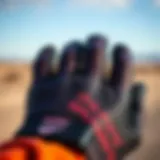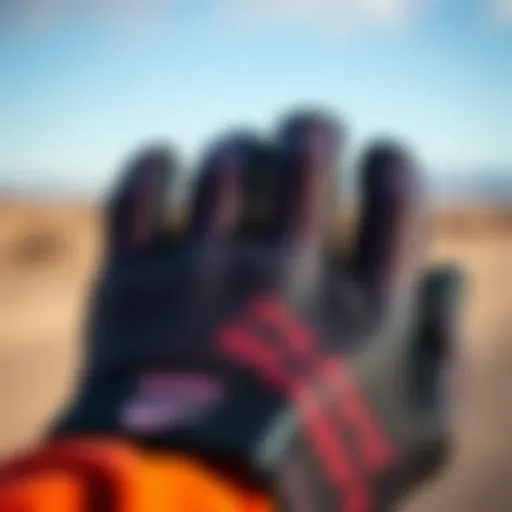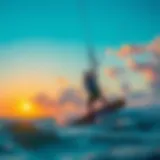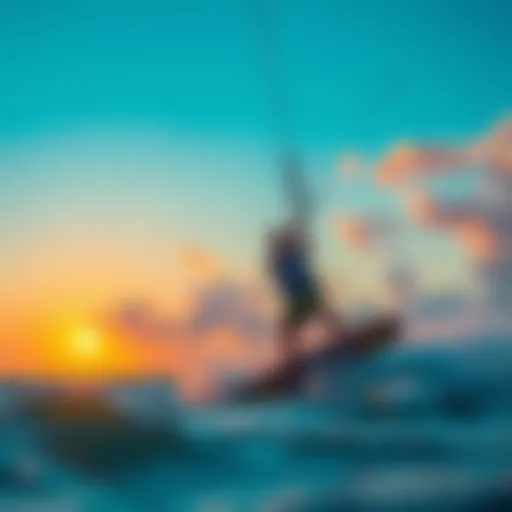Explore Naish Boards: A Complete Guide for Kiteboarders
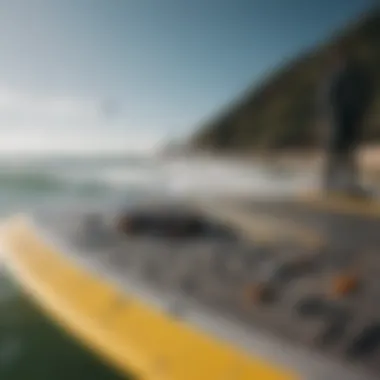

Intro
When it comes to kiteboarding, the board beneath your feet can make or break your entire experience. Among the myriad choices available, Naish boards have carved out a niche that many enthusiasts admire. They bring a legacy of innovation and quality to the waters, catering to everyone from beginners to seasoned riders. This guide serves as a beacon for those eager to delve into the world of Naish boards, with insights into various models, essential features, and care practices to enhance your riding experience.
Gear Insights
Latest Gear Reviews
Diving into the depths of kiteboarding gear often leads enthusiasts to the Naish line-up. Naish boards are known for their robust construction and performance capabilities. For instance, the Naish Monarch is widely lauded for its versatility across conditions. Its shape combines stability and responsiveness, making it a great choice for both flat water and small waves.
Another standout is the Naish Slash, perfect for those who fancy aggressive riding and aerial tricks. Its unique rocker profile aids in maneuverability, allowing riders to carve and launch with precision. Reviews consistently point out that riders who upgrade to the Slash notice an immediate difference in their ability to handle challenging conditions.
When exploring newer models, it's clear that Naish keeps pushing the envelope. The innovation in the design not only speaks to performance but also centers on rider comfort and control.
Essential Gear for Beginners
For those just embarking on their kiteboarding journey, having the right gear is as critical as learning the ropes. Beginners can often feel overwhelmed by options, but here are some essentials when looking at Naish products:
- Naish Drive: Designed for newcomers, it offers stability and ease of use, making it easier to learn the ropes without battling the board.
- Naish S26: This model provides a smooth ride which makes it forgiving during those early learning curves.
- Safety Gear: Never overlook a good helmet and impact vest. The Naish brand also offers accessories that complement your board and enhance safety.
By starting with the right equipment, newcomers can nurture their skills confidently, setting the stage for progression in the sport.
Techniques and Tips
Advanced Tricks and Techniques
As kiteboarding enthusiasts progress, they naturally seek to elevate their skills. Advanced riders will tell you that mastering aerial tricks requires a solid understanding of both the board's capabilities and the nuances of kite control. Riders aiming to perform tricks like backrolls or kite loops often praise the Naish boards for their resilience and performance.
Practicing on a board like the Naish S27 might give riders that extra edge, as its design provides excellent pop and response, essential for executing maneuvers. Watch closely; timing is everything. Ensure that your weight is evenly distributed on the board when launching into the air.
Safety Practices for Kiteboarders
While the thrill of flying above the water is exhilarating, safety should always be front and center:
- Assess Conditions: Before every session, check the weather and wind conditions. Naish boards can handle various environments, but understanding the conditions can prevent mishaps.
- Know Your Limits: Push boundaries slowly. A new trick can be enticing, but it’s crucial to know when to back off and refine the basics.
- Emergency Procedures: Familiarize yourself with self-rescue techniques specific to kiteboarding. Maintaining control over the kite during challenging situations can be a lifesaver.
"Investing in quality gear like Naish boards can truly transform the kiteboarding experience, allowing riders to focus on enjoying the sport rather than battling their equipment."
Epilogue
The world of Naish boards offers a gateway to exhilarating kiteboarding adventures. From their rich history of quality boards to the insights provided herein, kiteboarders will find the journey more accessible and enjoyable. Whether you’re picking your first board or refining your skills on the waves, understanding the nuances can make all the difference. Embrace the journey, and remember that every expert was once a beginner.
Prologue to Naish Boards
When it comes to kiteboarding, the equipment choices made can make or break the experience. One brand that has carved out a significant niche in this realm is Naish. Their boards are not just tools; they embody technology, design, and the spirit of the sport. This section focuses on the Introduction to Naish Boards, offering insights into their relevancy, history, and significance in the kiteboarding community.
History of Naish Boards
Naish Boards have a rich and storied past, tracing back to the brand's founding by Robby Naish, a kiteboarding legend. Established in 1979, Naish began with windsurfing equipment, gradually shifting focus to kiteboarding as this sport caught wind (pun intended.) They were among the first to recognize that kiteboarding could expand beyond just a niche activity and become a global sport.
The evolution of Naish Boards reflects the rapid advancements in kiteboarding technology. Early models were quite rudimentary and often hampered by the limitations of materials and design. However, as the sport progressed, so did the board designs. Innovations such as the use of lightweight and durable materials, changes in board shapes, and refined fin systems all played a key role in enhancing performance.
Naish has always had an ear to the ground, listening to feedback from riders while simultaneously pushing the boundaries of what is possible in kiteboarding equipment. Their boards cater to a diverse range of styles, ensuring that every rider has a suitable option, whether they're carving through the waves or pulling off tricks in flat waters.
Naish: Pioneering Innovation in Kiteboarding
Innovation is at the heart of Naish's identity. Each board reflects a commitment to high performance and adaptability, qualities that are crucial for any kiteboarding enthusiast. In an industry where every detail can influence the ride, Naish continually re-evaluates its designs against the backdrop of rider feedback and emerging technologies. This diligence manifests in several ways:
- Material Evolutions: Naish uses cutting-edge materials that enhance performance while making the boards lighter and stronger.
- Design Philosophy: Their boards often feature a distinctive shape, which influences how they carve through the water and handle in the air. These design changes have made Naish Boards a popular choice for riders looking to gain an edge.
- Customization: Many Naish Boards come equipped with adjustable features to suit varying skill levels and riding styles.
In any discussion about kiteboarding, mentioning Naish Boards feels essential. They are not just boards; they carry the weight of a brand that has pioneered many aspects of the sport.
"Naish has transformed kiteboarding equipment into an art form, enabling enthusiasts to connect deeply with the sport."
Through these innovations, Naish has solidified its position not only as a leading brand but also as a catalyst for growth in kiteboarding as a whole.
Understanding Different Types of Naish Boards
When diving into the world of kiteboarding, selecting the right board is crucial. Different board types cater to various riding styles, conditions, and skill levels. Naish boards, with their innovation and versatility, stand out in the market, offering something for everyone. Whether you're skimming across calm waters or tackling choppy waves, understanding the types of Naish boards can help riders make informed decisions, thus enhancing their entire kiteboarding experience.
Twin-Tip Boards
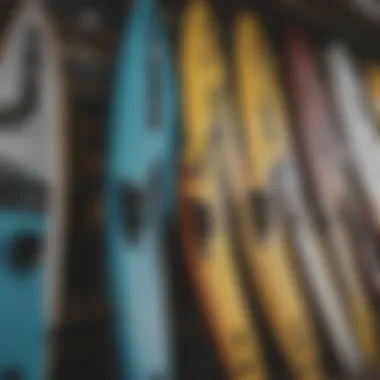

Twin-tip boards are the bread and butter for many kiteboarders. Designed with symmetry, they excel in versatility, enabling riders to effortlessly switch directions. This design allows for quick maneuvers and instant transitions—an advantage particularly sought after by beginners and freestyle enthusiasts.
- Ideal for Tricks: These boards enhance performance when trying flips and spins, making them a favorite among those looking to show off skills.
- User-Friendly: Newer kiteboarders will appreciate their forgiving nature; they provide stability and tend to stay on top of the water, even in less than ideal conditions.
- Variety of Sizes: Naish offers a lineup of twin-tip boards in various sizes, allowing riders to choose one that suits their weight and skill level.
In summary, twin-tip boards are a fantastic choice for those who cherish freedom of movement and enjoy experimenting with aerial tricks. Their adaptability makes them a staple in the kiteboarding arsenal.
Directional Boards
Directional boards, on the other hand, are designed with a clear forward direction, akin to traditional surfboards. These boards shine in wave riding scenarios where getting upwind and maintaining control is paramount. If you can picture gliding down swell, carving through waves, then a Naish directional board might just be your best bet.
- Wave Performance: Directional boards typically have more rocker, which helps them navigate through waves and rough waters.
- Stability at Speed: Riders can enjoy a smooth ride even at high speeds, thanks to their shape and fin setups.
- Greater Control: Ideal for advanced riders who enjoy deriving power from the kite, allowing them to push limits further.
To highlight, riders seeking to ride big waves or wanting to experience the thrill of directional riding will find that Naish directional boards are tailored for performance in such conditions.
Foil Boards
Foil boards represent a newer evolution in kiteboarding, with their distinct design that allows riders to glide above the water's surface. Using a hydrofoil, these boards lift off the water at speed, offering a unique sensation—almost like flying.
- Smooth Riding Experience: The hydrofoil reduces drag, making it easier to maintain speed even in lighter wind conditions.
- Innovative Movement: Riders can carve turns effortlessly with less water resistance, making each ride feel like an adventure.
- Exploration: Foiling opens up new possibilities—including riding in shallower waters or locations where traditional kiteboarding may not be feasible.
In summary, Naish's foil boards cater to those kiteboarders looking to explore new sensations and enhance their riding experience. Whether it’s the thrill of flying above the water or the ability to ride in variable conditions, foiling adds an exciting dimension to kiteboarding.
Understanding these different types of Naish boards ensures that all kiteboarding enthusiasts can find the right fit for their riding style, enhancing their capabilities and maximizing enjoyment on the water.
Key Features of Naish Boards
Understanding the key features of Naish boards is essential for kiteboarders looking to enhance their experience on the water. These features not only define the performance of the board but also help riders choose the right equipment that matches their skills and riding style. Naish boards are engineered with a variety of advanced technologies and designs that directly impact speed, control, and maneuverability. This section will delve into important aspects such as construction materials, board shape, and fin systems, providing insights into how each element contributes to the overall performance and rider satisfaction.
Construction Materials
The construction materials of Naish boards play a crucial role in determining their strength, durability, and weight. These boards are typically made from a combination of wood, fiberglass, carbon fiber, and other advanced composites, each chosen for specific reasons. For instance, the use of wood for the core provides excellent flex and responsiveness, while fiberglass layers offer durability and resistance to impact.
On the other hand, carbon fiber is often incorporated in higher-end models to achieve an even lighter weight, enhancing speed without compromising rigidity. This combination allows riders to enjoy a versatile performance suitable for various conditions, whether gliding over flat waters or tackling choppy waves. Furthermore, understanding these materials can help riders make informed choices about which board will best meet their individual needs.
"The right choice in materials can make a world of difference in your kiteboarding experience."
Board Shape and Design
The shape and design of Naish boards are not mere aesthetic features; they significantly influence how the board behaves in different environments. Whether opting for a twin-tip, directional, or foil board, the shape is one of the primary factors affecting a rider's performance.
Twin-tip boards, for example, feature symmetrical designs allowing for riding in either direction, making them ideal for beginners and freestyle enthusiasts. Directional boards, typically designed for surfing-style riding, feature a pointed nose which enhances tracking and stability in waves. Foil boards, with their unique profile, enable riders to "fly" above the water, providing an exhilarating experience that is increasing in popularity.
In addition to shape, board width and rocker—how much the board curves upwards—affect performance as well. A wider board offers more stability, while increased rocker provides better control in choppy conditions. Understanding these intricacies can help riders make better choices, ensuring they find a board that matches their unique riding style and the locations where they plan to ride.
Fin Systems and Configurations
The fin system on Naish boards is a vital feature that contributes to their maneuverability and overall performance. Fin configurations can vary based on the board type and intended riding style. For instance, a twin-tip board often comes with shorter fins that enhance speed and allow for quick direction changes, suited for freestylers who rely on agility.
Conversely, directional boards typically have larger fins that provide better grip and stability when riding in waves and windy conditions. The fin box system, which allows riders to adjust or swap fins, gives an added layer of customization, enabling riders to adapt their setup according to the conditions or their personal preferences.
In summary, the right fin configuration can significantly enhance turning capabilities and overall control, making it crucial for riders to pay attention to this aspect when selecting their Naish board.
Each of these key features contributes to Naish's reputation for high-quality kiteboarding equipment. Riders who take the time to understand these elements gain a strong advantage, setting themselves up for a more enjoyable and performance-oriented experience on the water.
Performance Analysis of Naish Boards
When it comes to kiteboarding, the board is a centerpiece of the experience. The performance of a Naish board significantly affects how riders engage with the water, how they handle air conditions, and how they enjoy the overall experience. This section delves into the nuances of performance — examining speed, maneuverability, stability, and control — all of which are critical for ensuring riders can maximize their riding potential.
Speed and Maneuverability
Speed and maneuverability are closely linked. A board that glides swiftly across the water gives riders an added thrill. Naish boards utilize a combination of lightweight materials and innovative shapes to enhance these characteristics. Many users find them responsive and nimble, allowing for sharper turns and quick redirects.
It's important to recognize how different models cater to varying styles of riding. For instance, some boards prioritize speed, perfect for those who crave the adrenaline rush of slicing through waves. Others are designed for those who wish to perform complex tricks and jumps, where precision and quick transitions are necessary. Riders often comment:
"With the Naish board, it's like having a conversation with the sea; every subtle movement translates into an effortless glide."
Aspects to consider:
- Board Shape: Some designs favor a longer, narrower configuration that enhances speed, while others may be wider to improve stability.
- Rider Weight: Lighter riders may find certain models more maneuverable, while heavier riders may opt for boards optimized for control at high speeds.
Stability and Control
Stability is another pillar of performance on Naish boards. A stable platform allows riders to experiment with techniques without the fear of losing control. This is especially crucial for beginners who are still finding their footing, but even advanced riders value a board that allows for smooth landings and steady rides.
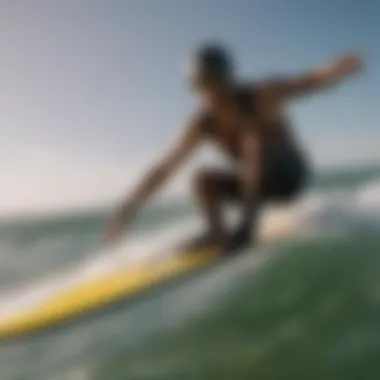

Naish boards traditionally have well-designed fin systems which contribute to sharp control. The position and flex of the fins dictate how well a board grips the water. This is vital, as having a solid grip enhances both speed and the ability to make precise turns. The alignment of the fins and the board’s outline creates a cohesive sense of control over the water.
When evaluating stability, one should weigh:
- Water Conditions: Calm waters will demand different stability measures than rough, choppy seas.
- Rider Technique: Experienced riders may adapt their style to suit whatever stability the board can provide, making it vital to choose a board that aligns with their skills.
In summary, a thorough examination of speed, maneuverability, stability, and control reveals how integral these factors are to the kiteboarding community. Naish boards, recognized for their bespoke craftsmanship and rider-focused designs, not only elevate the ride but also potentialize the craft for all levels.
Selecting the Right Naish Board for Your Needs
Selecting the right Naish board is akin to choosing the right partner for a dance; it requires a deep understanding of one's skill level, the environment you plan to ride in, and your personal preferences. Each kiteboarding adventure presents unique challenges and opportunities. The right board can significantly enhance your experience, allowing for a smoother ride, improved performance, and most importantly, safety.
When it comes to kiteboarding, one size doesn’t fit all. The variety of Naish boards available enables riders to find exactly what fits their needs. Understanding the nuances is crucial, as it can mean the difference between an exhilarating session or a frustrating experience.
Assessing Skill Levels
Skill level plays a pivotal role in selecting the proper kiteboard. For instance, beginners typically benefit from boards designed for stability and ease of handling. These boards often have a larger surface area, which helps in planning efficiently and achieving better balance. An example is the Naish Drive, which offers a user-friendly experience with soft flex characteristics that absorb bumps on the water, making it an excellent choice for newcomers.
On the flip side, advanced riders might gravitate towards boards that offer more speed and responsiveness. A board like the Naish Monarch may appeal to seasoned kiteboarders looking for high performance, tailored for tricks and tighter turns. That said, choosing a board that challenges one’s skills while still being manageable is key.
Matching Boards to Locations
Every kiteboarding spot has its quirks, influenced by factors like wind patterns, water conditions, and even local regulations. For instance, if you’re prepping for a session in choppy waters, a directional board, like the Naish Global, is often the go-to. Its design helps cut through rough water, providing a stable and comfortable ride even in the toughest conditions. Meanwhile, for flat waters or lightwind situations, a twin-tip design such as the Naish Quest might be more suitable, allowing for versatility and quick transitions.
Remember to consider local wind conditions when selecting your board. If you plan on riding at a spot known for gusty winds, you might opt for a board with a slightly larger surface area for better control.
Understanding Personal Preferences
Personal preferences often shape one's kiteboarding experience just as much, if not more than, the technical aspects. Do you prefer a more laid-back ride, or are you all about tackling challenges and pushing the limits of speed? This personal flavor will guide your choice.
For example, some kiteboarders prefer the feel of wood boards like the Naish Mana for their natural flex and connection with the water, while others might lean toward composite boards for their lightweight and enhanced pop. Style matters too; the aesthetic and finish of a board can make a difference in how you feel when you're out on the water.
"The right board is not just a piece of equipment; it is an extension of your identity as a rider. Choose wisely."
Maintenance and Care for Naish Boards
Taking care of your Naish board is equally as important as knowing how to ride it. Proper maintenance not only extends the life of the board but also ensures optimal performance during your time on the water. A neglected board can lead to a series of mishaps, from poor speed to potential injuries. Kiteboarding can often take place in harsh environments, like salt water and sand, and if those elements are left unattended, wear and tear can snowball like a bad habit. So, let’s take a closer look at how to properly clean, store, and maintain your trusted Naish board.
Cleaning and Storage Recommendations
Cleaning your Naish board is simpler than it may seem but demands consistency. After each session in the water, it's a good idea to give it a quick rinse with fresh water. Salt from the ocean can leave residues that degrade the material over time. Here are some key steps to keep your board pristine:
- Rinse with freshwater: As soon as you step off the water, get your board under a light stream of fresh water. This helps dislodge sand and salt that can do damage.
- Use mild soap: For deeper cleans, mix a bit of biodegradable soap with warm water and use a soft cloth or sponge. Avoid harsh chemicals, as they can strip protective coatings.
- Dry properly: After rinsing, shake off excess water and dry the board using a soft towel to avoid water spots. Store the board in a well-ventilated area to prevent mold from developing.
- Store flat when possible: If you can, store the board flat in a board bag to protect it from bumps and scratches while not in use.
Storage considerations
When the kiteboarding season comes to an end, or you're making a long trip, think about how you store your board:
- Cool, dry place: Always avoid direct sunlight and extreme temperatures. A room temperature area is best to prevent warping.
- Avoid stacking: When storing multiple boards, make sure they aren’t stacked on each other without adequate padding. This can create pressure points leading to damage.
Repair and Maintenance Tips
The best-laid plans can sometimes go awry, and dings or scratches on your Naish board may happen. Repairs are part of the routine for any serious kiteboarder. Here are some helpful tips to keep your board in fighting shape:
- Inspect Regularly: Check your board for any signs of damage after every session. Look for cracks, dents, or delamination. Early detection can save a world of trouble.
- DIY Repairs: Small scratches can often be filled with appropriate marine epoxy if you feel up to it. Just make sure to sand the area slightly to create a good surface for the epoxy to adhere.
- Professional Help: For larger damages or if you're not sure about a repair, don’t hesitate to contact professionals. Companies like Naish can provide guidance or services. The extended performance of your board is well worth the investment.
- Transport Safely: Always transport your Naish board in a dedicated bag. Not only does this minimize scratches, but a good bag also protects against impacts.
"A well-cared-for board is like a trusted friend on the water; it never lets you down."
Following these recommendations to maintain and care for your Naish board will pay dividends by ensuring it remains ready for your next adventure. Taking these steps might seem minor, but they act as a solid foundation for a reliable and long-lasting kiteboarding experience.
Testimonials and User Experiences
When it comes to understanding the impact of a piece of equipment on one’s performance, there’s no better insight than that of actual users. The experiences shared by kiteboarders bring to light the true versatility and functionality of Naish boards. These testimonials not only elucidate the strengths and weaknesses of the boards based on real-life scenarios but also paint a much richer picture of what novices and experienced riders can expect.
By delving into the narratives of both new and seasoned kiteboarders, readers gain valuable knowledge about board performance across various conditions, skill levels, and personal preferences. Whether it’s hearing about a hopeful beginner’s first successful ride or an expert’s nuanced take on materials and design, these stories build a sense of community. Moreover, they often highlight common pitfalls, helpful tips, and the small tweaks that can make a significant difference in the riding experience, thereby increasing the overall understanding and appreciation of Naish boards.
Stories from Novice Kiteboarders
Imagine standing at the edge of a shimmering sea, the wind teasing a sense of adventure inside you. For many novice kiteboarders, Naish boards become the vehicle to that dream.
A fellow rider shared her experience with the Naish Pivot, which she described as becoming her "go-to board" during her learning phase. She highlighted how its stability even in choppy waters greatly boosted her confidence as she learned the ropes. She recalled, "Initially, I was scared I’d faceplant in every attempt, but the board's design helped me gain my footing faster than I expected. The sensation of carving through waves felt liberating and, honestly, addictive!"
Another novice, who opted for the Naish Monarch, noted how its lightweight frame made it easier for him to maneuver as he clumsily tried to get air on his jumps. He expressed that while every small gust of wind could send him tumbling, the board's ability to remain responsive allowed him to progress steadily, nearly dashing his fears of being swept away.
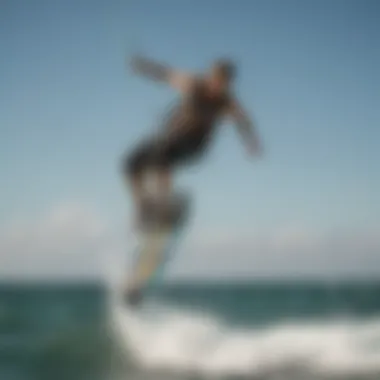

Such stories resonate widely and reveal that while everyone’s journey is unique, certain qualities of Naish boards make the initial learning curve much less steep.
Insights from Advanced Riders
Now, let's transition to experiences from seasoned pros. Advanced riders often have a different perspective, particularly on performance under extreme conditions and technical aspects of board design.
One pro shared that after switching to the Naish Custom board, he immediately noticed improvements in both speed and agility. He stated, "In competitive events, every second counts. My Naish board allowed me to cut through water like a hot knife through butter. The precision in turning and speed burst is just remarkable! It’s like the board is an extension of my body. When the wind decides to throw a tantrum, I feel I’ve got the upper hand!"
Another rider focused on the build quality. She emphasized the durability of her Naish board during extreme conditions, stating, "I’ve taken my Naish into some wild storms, and while I’ve seen friends struggling with wear and breakage, mine literally holds its ground. It's built to last, and that peace of mind is priceless when you cut through the waves."
These insights not only reinforce the quality assurance of Naish boards but also speak volumes about the brand's commitment to performance and durability, key factors that any keen kiteboarder must consider when selecting their equipment.
Pros and Cons of Naish Boards
When it comes to kiteboarding, the equipment you choose can profoundly influence your experience on the water. Naish boards, renowned in the kiteboarding community, present both notable strengths and some weaknesses. Understanding these aspects is important for enthusiasts contemplating their investment. This section delves into what makes Naish boards a transparent choice for many and what areas you might need to consider before buying.
Strengths of Naish Boards
Naish has carved out a significant niche in the kiteboarding market due to several compelling strengths:
- Performance Excellence: Many users rave about the exceptional performance of Naish boards. Designed with precision, these boards can handle diverse conditions, offering stability and speed. Riders often find they can execute tricks and maneuvers with more ease compared to boards from other brands.
- Innovative Technology: Naish continually pushes the bounds of technology in its product lines. Take for instance their use of unique materials in board construction that enhance durability while keeping weight low. This combo gives kiteboarders that satisfying pop during jumps without compromising on control.
- Variety of Options: Whether you're just starting out or are a seasoned pro, Naish has options for every level and preference. From twin-tips ideal for all-around riding to directional boards that shine in big waves, their range invites a broader audience to find the right fit.
- Community and Support: Riders frequently speak about the vibrant community surrounding Naish boards. Not only are there a plethora of online forums to share tips and experiences like on reddit.com, but the company also provides excellent customer service, ensuring assistance is always a call or click away.
"Crafting high-quality products while listening to their riders has helped Naish maintain its reputation over the years."
Areas for Improvement
Despite their many strengths, Naish boards aren't without room for growth. Here are a few points that potential buyers might ponder:
- Price Point: One significant consideration is cost. Naish boards generally sit at a premium price range. For some kiteboarders—particularly beginners—it might feel like a hefty investment. It's wise to evaluate budget against the expected usage and performance benefits before making a decision.
- Weight Considerations: While Naish boards are celebrated for their performance, some riders have remarked that certain models could be lighter. When caught up in serious conditions, having a lighter board can enhance maneuverability, making those tough rides more manageable.
- Limited Availability in Certain Regions: Depending on where you find yourself, the availability of Naish boards might differ. In some places, local retailers might not carry their full range. This can lead to buyers settling for less without exploring all potentials that Naish has to offer.
In summary, the pros and cons of Naish boards can shape the kiteboarding experience significantly. Weighing these factors can help riders make informed decisions that align with their personal style and needs on the water.
Comparative Analysis with Other Brands
When diving into the ocean of kiteboarding, the choice of equipment can either anchor you down or set you soaring. The Naish board has carved out a remarkable niche, but to truly understand its merits, a comparative analysis with other brands becomes crucial. This section does not merely serve to highlight differences; instead, it offers kiteboarding enthusiasts an informed perspective on the advantages and limitations of Naish boards vis-à-vis competitors. Knowing these nuances is essential for riders who seek optimal performance and value.
A solid comparative analysis can illuminate several key areas:
- Design Philosophy: Each brand typically has a unique approach to board design, which affects ride quality. For example, Naish boards often emphasize fluidity and versatility, while other brands might focus on stability or aggressive maneuverability.
- User Experience: By understanding how different boards feel underfoot, one can gauge performance suitability. This aspect can vary significantly between brands, influencing decisions based on individual riding style and conditions.
- Cost-Effectiveness: It's not just about upfront pricing; considering the longevity and resale value of your board can lead to substantial savings over time.
- Reputation and Customer Support: The experiences of other riders regarding warranty claims and customer service can be informative when making a choice.
Price Point Comparison
When it comes to kiteboarding gear, price often weighs heavily on decision-making. Naish boards occupy a mid- to high-tier price bracket. The investment can seem steep, yet this stems from the quality of materials and highest-tech construction processes involved.
Average Price Ranges:
- Naish boards typically range between $800 to $1,500, depending on the model and technology level.
- Competitors like Slingshot and Cabrinha also range from $800 to upwards of $1,600, making Naish competitive in terms of price.
While brands may bear similar price tags, the value proposition changes drastically when performance and durability enter the conversation. In general, Naish boards are recognized for their solid performance and longevity, often leading to minimal need for replacement or repair. The thorough engineering invested in Naish products tends to increase their resale value when compared to boards from other brands.
Performance Metrics Against Competitors
Performance is the jewel in the crown when evaluating any kiteboard. Naish boards are well-regarded for their excellent balance between speed and control, a quality that many brands struggle to perfect. By weighing key performance metrics against competitors, we can see where Naish truly shines:
- Speed: Naish boards, particularly the twin-tips, are designed for efficiently converting wind energy into propulsion. This attribute remains competitive against brands such as Liquid Force, which sometimes struggles with consistent speed in choppy waters.
- Maneuverability: Riders often appreciate the responsiveness of Naish boards due to their agile turn capabilities. Many competitors, like North and Core, offer boards that excel in one direction but may falter in versatility.
- Stability: Naish prides itself on stable performance, even in rough weather conditions. This stability sometimes gets challenged by other brands that prefer lighter construction, often compromising control during higher winds.
"Choosing a kiteboard is less about what brand is the flashiest, and more about how it fits your personal style and needs in the water."
Finale
The conclusion section is not just a mere wrap-up but rather a critical synthesis of the myriad facets explored throughout this guide on Naish boards. As kiteboarding enthusiasts—whether you’re a novice or a seasoned rider—an understanding of your equipment is paramount to both performance and enjoyment on the water. This guide highlights the evolution, types, features, and user experiences related to Naish boards, establishing a comprehensive narrative that underscores their significance in kiteboarding.
Summary of Key Takeaways
In reviewing the essential points covered, you’ll find that Naish boards have continually pushed the boundaries of kiteboarding design and technology. A few key takeaways include:
- Diverse Options: Naish provides an array of boards catering to different riding styles, such as twin-tip, directional, and foil boards. Each type serves specific conditions and preferences, ensuring there’s something for everyone.
- Innovative Features: Construction materials, fin systems, and board shapes have evolved to enhance performance metrics such as speed, maneuverability, and overall stability. Understanding these elements can greatly improve your riding experience.
- User Insights: Testimonials from varying levels of riders reveal how personal preferences and skills affect board choice. Beginners may prioritize stability and ease of use, while advanced riders look for agility and performance enhancement.
By digesting these takeaways, kiteboarders can make more informed decisions, enhancing their skills and experiences on the water.
Future of Naish Boards in Kiteboarding
Looking ahead, the future of Naish boards in the kettle of kiteboarding appears promising. As technology continues to advance, one can expect several key trends to emerge:
- Sustainability Initiatives: There’s an increasing awareness regarding environmental impact in sports equipment manufacturing. Naish boards may see a shift toward eco-friendly materials and production methods, aligning the brand with the growing demand for sustainable sports solutions.
- Enhanced Customization: As riders become more discerning about their equipment, Naish may offer more customizable options and technologies, allowing riders to tweak their boards for speed, control, and maneuverability suited to their unique style.
- Integration of Smart Technologies: With the surge in tech innovation, the incorporation of smart features—like sensors or performance tracking—into Naish boards could revolutionize how kiteboarders interact with their equipment, setting new standards in performance evaluation.
In summary, the exploration of Naish boards underscores a narrative that is as dynamic as the sport itself. Embracing these changes and possibilities presents an exciting future for both the brand and kiteboarding enthusiasts.
Remember, every ride starts with the right board. Choose wisely and enjoy the waves!
